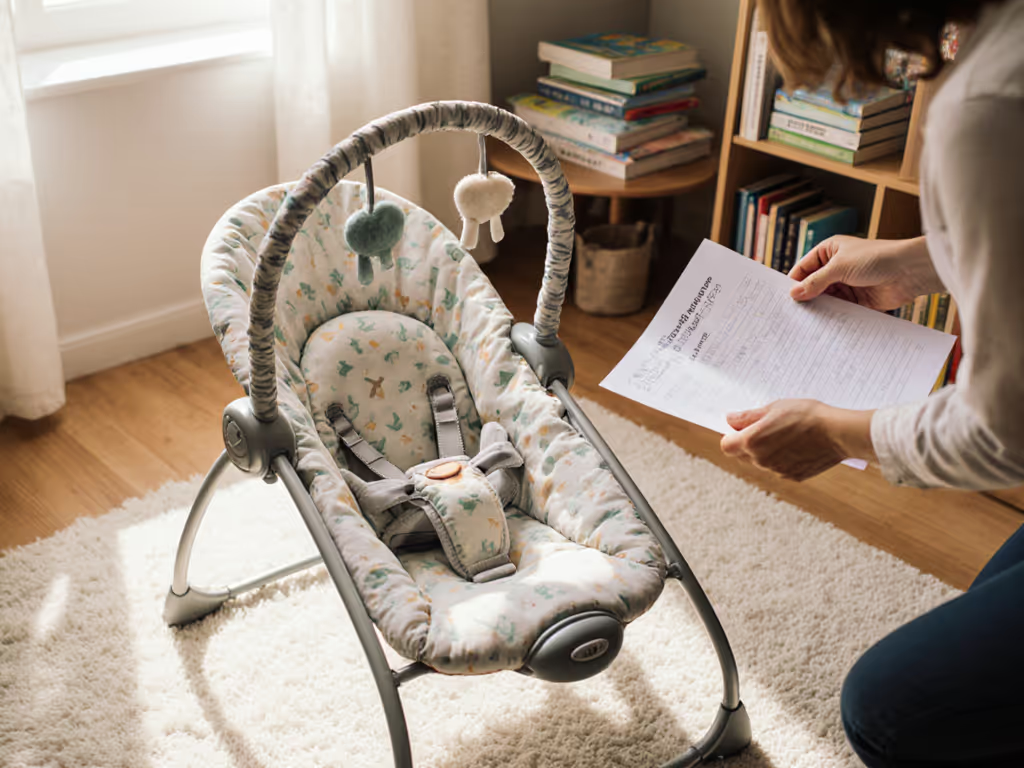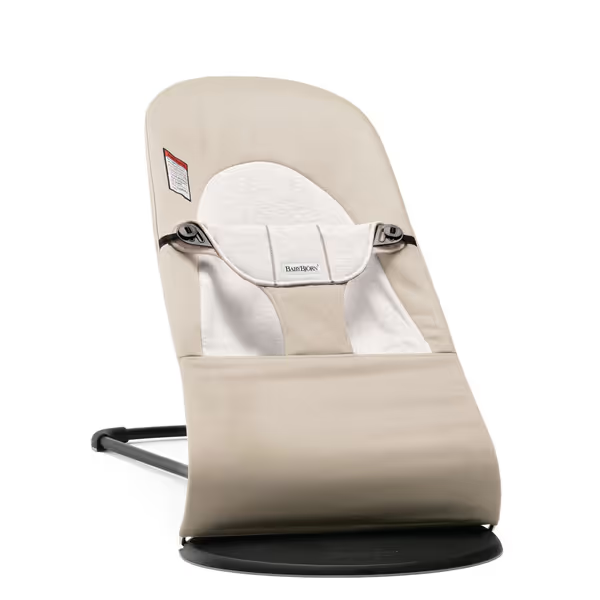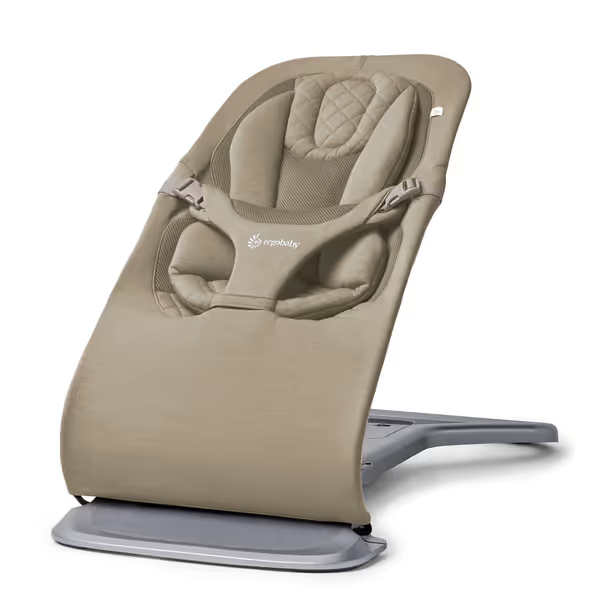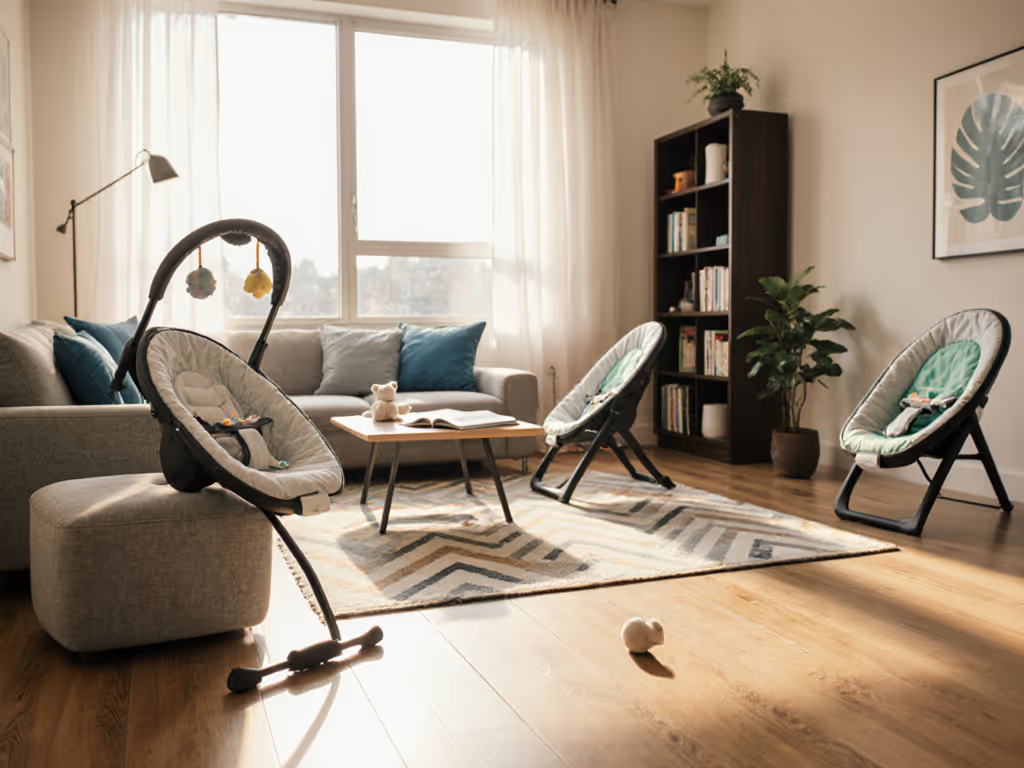
Second-Hand Bouncer Safety Checklist: Buy Used Safely

When your living room doubles as a nursery, kitchen, and office, finding baby gear that fits and feels safe becomes a daily puzzle. That's why so many of us turn to second-hand bouncers, a thoughtful choice for small homes where space is sacred. But how do you know if that gently loved bouncer is truly safe for your baby? Today, I'll walk you through a practical, step-by-step safe used bouncer purchase guide that focuses on what actually matters in real-life use. This second-hand bouncer buying guide isn't about perfection, it's about smart safety checks that protect your baby while respecting your cramped floor plan and tired brain.
Why Safety Checks Matter for Second-Hand Bouncers
In my tiny urban apartment, I've learned that calm is designed with repeatable steps and low-stimulus tools. When I bought my first second-hand bouncer, I didn't just look at the price tag, I checked what mattered for our space. Most parents don't realize that nearly 30% of used baby gear has safety issues, according to recent consumer safety reports. But with a simple inspection routine, you can spot risks before they become problems. See our complete bouncer safety guide for the essentials before you inspect.
Your peace of mind starts with knowing exactly what to check. Think of it as creating your own "two-song window" for safety: just enough time to verify everything matters, without overwhelming yourself.
The Second-Hand Bouncer Safety Checklist: 7 Steps to Confidence
Step 1: Frame & Base Inspection (5 minutes)
Sit on the floor, right where you'd use it. This perspective shows stability issues immediately.
- Check wobble: Gently press down on all four corners. Any rocking or uneven movement? Pass.
- Examine legs: Run fingers along metal/plastic legs. Look for cracks, deep scratches, or bends. Small dents are fine; structural deformities aren't.
- Test non-slip feet: Moisture makes surfaces slippery. Dampen a cloth, place it under one foot, and apply downward pressure. Good feet won't slide.
- Weight test: If possible, sit in it yourself (most hold 20+ lbs). Notice how it feels: stable base = calm baby.
Calm over clever. A basic frame with solid construction beats fancy features that might fail.
Step 2: Fabric & Seam Assessment (3 minutes)
Bright colors fade, but safety doesn't. Lay the bouncer flat if possible.
- Search for weak spots: Focus on stress points (where straps attach, seams near baby's head/feet). Pull fabric gently, any stretching or thinning?
- Check for stains: Old milk or spit-up can weaken fibers. Deep-set yellow stains near the crotch area? Risky.
- Feel the texture: Fabrics should be supple, not stiff or crunchy (signs of repeated saturation without proper drying).
- Verify breathability: Hold fabric up to light. You should see some light through mesh panels (critical for safety).
Step 3: Harness & Safety Features (2 minutes)
This is non-negotiable. Your baby's security depends on flawless function.
- Buckle test: Click each buckle 5 times. Smooth action every time? Good. Sticking or difficult releases? Pass. For details on harness types, see our bouncer restraint systems comparison.
- Strap strength: Pull harness straps firmly toward you. They shouldn't stretch more than 1/4 inch.
- Webbing inspection: Unbuckle everything. Look for fraying, especially where straps thread through hardware.
- Height adjustment: If adjustable, move it through all positions. Should feel secure at each stop, no slipping.
Step 4: Motion Mechanics Check (For Spring-Powered Models)
Many parents in small apartments prefer quiet, manual-bounce models. But if it has springs:
- Listen closely: Press down gently and release. Should hear a soft shhh sound, not metallic pings or grinding.
- Check spring coverage: Metal springs must be fully enclosed in fabric or plastic housing. Visible springs = hazard.
- Test bounce consistency: Press down slowly at baby's foot position. Should return smoothly, not jerkily or with resistance.

BabyBjörn Bouncer Balance Soft
Step 5: Wear & Tear Assessment
Honest wear is normal. Dangerous wear isn't. Here's what actually matters for daily use:
- Replaceable parts check: Are covers, inserts, or footrests removable? If yes, minor wear is less concerning.
- Odor test: Fresh air for 24 hours, then smell fabric. Musty smells indicate mold (can't be fully removed).
- Color fading: Even fading is fine; uneven patches suggest chemical damage.
- Stitching integrity: Focus on seat bottom and backrest. Double-stitched seams should show no skipped stitches.
Step 6: Verify Recalls & Safety Certifications
This takes less time than brewing coffee, but protects your baby for months.
- Find manufacturer label: Usually on frame or fabric tag. Note model number and date.
- Check recall databases: Use the CPSC app or website (takes 2 minutes). Enter make and model number. No results? Good. If you're unsure, follow our step-by-step recall check to confirm.
- Look for certification marks: ASTM F2167 (standard for bouncers) or JPMA certification. No markings? Risky.
- Check production date: Anything older than 5 years may not meet current safety standards.
"Two-song windows beat twenty-feature remotes, every single time."
Step 7: Small-Space Suitability Test
Your cramped floor plan has unique needs. Before finalizing your safe used bouncer purchase:
- Measure twice: Note footprint dimensions. Will it fit in your actual space, not just on paper? (Example: Does "fits in corner" really work with your sofa?)
- Try folding: If portable, fold it once. Should collapse flat in under 15 seconds with one hand.
- Weight check: Lift it. If heavier than 8 lbs, consider whether you'll actually move it between rooms.
- Noise test: Rock it gently. Audible squeaks or creaks? Problematic in thin-walled apartments.

Ergobaby Evolve 3-in-1 Bouncer
Trustworthy Second-Hand Bouncer Brands to Consider
Not all bouncers age equally. Some brands maintain safety and function even after years of use. If you want models that hold value, see our high-resale bouncers. Here are my top recommendations for reliable trustworthy second-hand bouncer brands that suit small homes:
BabyBjörn Bouncer Balance Soft
This minimalist design appears constantly in second-hand markets for good reason. Parents love how the frame maintains integrity after years of use. Key safety advantages:
- Frame stability: Steel-reinforced plastic maintains rigidity even after heavy use
- Fabric longevity: Cotton/polyester blend resists pilling and stretching
- No springs or motors: Eliminates common failure points
- Machine-washable cover: Critical for second-hand purchase, easily refreshed
When buying used, check that the height adjustment mechanism clicks securely. Some older models have worn detents, but this rarely affects safety if it still locks in place.
Ergobaby Evolve 3-in-1 Bouncer
Ergobaby's thoughtful engineering shows in how well these age. The medical-grade materials hold up remarkably well to regular use. Red flags to watch for:
- Mesh integrity: Check for stretched or torn mesh panels (common wear point)
- Height pedal mechanism: Should depress smoothly and lock securely
- Newborn insert snaps: Metal snaps should secure firmly without wobbling
What makes this excellent for second-hand purchase? The generous warranty coverage often transfers, and replacement parts are readily available. Even a 2-year-old model typically functions like new with proper care.

Graco Jumpstart 4-in-1 Bouncer
Graco Jumpstart 4-in-1 Activity Bouncer
Graco bouncers are common second-hand finds, but require careful vetting. Their multi-stage design introduces more potential failure points. When inspecting:
- Jumper mechanism: Check springs for rust or breakage (common issue)
- Tray attachment points: Should snap in/out firmly without wobbling
- Weight limit markings: Verify 40 lb capacity is clearly labeled (safety critical)
Only consider this model if all conversion features are intact, otherwise you're better with a simpler single-stage bouncer. The plastic components show wear faster than metal-framed options.
Red Flags: When to Walk Away
Some issues aren't worth negotiating. Trust your gut when you see:
- Missing safety labels (manufacturer can't be verified)
- Visible mold or mildew (not just stains)
- Compromised structural integrity (cracks in frame, broken welds)
- Recalled model (check CPSC database before purchase)
- Hazardous attachments (added toys not designed for the model)
Remember: In small spaces, one unsafe item creates disproportionate risk. Better to wait for the right find than compromise safety.
Extending Your Second-Hand Bouncer's Life
Once you've made your second-hand bouncer purchase:
- Clean gently but thoroughly: Use mild detergent and air dry. Never machine dry fabric components. For deep-clean steps and maintenance checks, use our bouncer cleaning guide.
- Rotate usage spots: Prevent uneven wear by moving location weekly
- Store properly: Fold flat with fabric cover on (prevents dust accumulation in crevices)
- Check monthly: Revisit your safety checklist even after purchase
Final Thoughts: Safety Without Sacrifice
Finding a safe second-hand bouncer isn't about finding perfection, it's about smart verification that respects your space constraints and mental load. With this pre-owned bouncer checklist, you're equipped to make a confident choice that keeps your baby safe while preserving your home's calm.
Remember my earliest parenting lesson: Two-song windows beat twenty-feature remotes, every single time. A simple, well-inspected bouncer that fits your space creates more peace than a complicated one that dominates your room.
Your actionable next step: Before your next online search, print this checklist (it fits on one page!). When you find a potential bouncer, spend 15 focused minutes checking the critical points. You'll quickly spot safe options while avoiding risky purchases.
The right second-hand bouncer isn't just a seat, it's 15 minutes of calm while you make coffee, take a shower, or simply breathe. That's worth checking carefully.
Calm over clever. Always.




